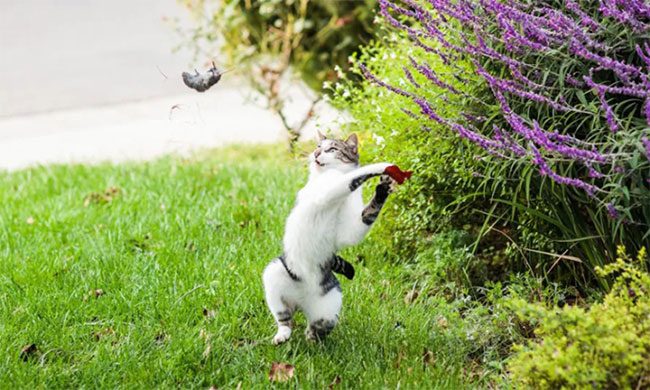Cats often play with their prey by pouncing, swatting, scratching, biting, and chasing before delivering a fatal blow, which helps reduce the risk of injury while killing it.
Domestic cats or domesticated cats are typically fed daily by their owners, but their natural hunting instincts remain very strong. Most adult cats will exhibit hunting behavior when they see small animals such as mice, lizards, or cockroaches. This wild instinct also explains why cats tend to toy with their prey, even after it is dead.

Cat playing with a mouse. (Photo: Angelo DeSantis)
According to Martina Cecchetti, a conservation scientist specializing in cat behavior at the University of Exeter in the UK, cats often play with their prey to tire it out before delivering the final fatal bite. This reduces the risk of injury while killing it.
Additionally, feral cats are known to be active hunters. They hunt throughout the day and do so “even when not hungry.” This natural instinct is not entirely lost when cats are domesticated.
A study published in 2013 in the journal Nature Communications found that feral and domestic cats in the United States kill up to 1.3 billion birds and 6.3 billion small mammals each year. In many cases, they hunt and play with their prey simply to “satisfy their passion.”
Toying with prey is also a way to hone hunting skills, and cats will seize any opportunity to do so. This is especially true for domesticated cats that do not have many opportunities to hunt. Sometimes, they play with both dead animals or food available in their bowls.


















































